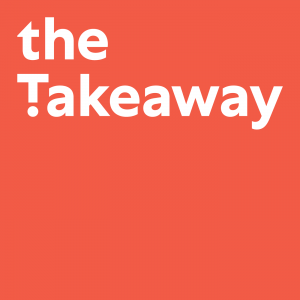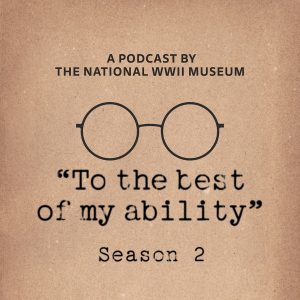What do Netflix, Nabisco, John Deere, Kellogg’s, the San Antonio Symphony, and Freddy’s Frozen Custard & Steakburgers have in common? For one, each of these companies have seen at least a part of their workforce strike within the last year. According to the Cornell University Industrial and Labor Relations School’s Labor Action Tracker, there have been 169 strikes so far in 2021, with more on the horizon. As unemployment rates drop, and workers across the country begin to claim a sense of power within their employment, long standing trends are beginning to shift.
A Gallup poll from early July found that 68% of Americans approve of labor unions, which is a dramatic increase from the 48% approval rating labor unions held in 2009. Even with the rising popularity of unions amongst the American people, the rate of representation is near all-time low levels. In 2020, only 12.1% of workers in the U.S. were represented by a union. Yet for those tracking labor relations within the past decade, the prevalence of strikes sweeping the nation is not all that shocking. Beginning in 2018, unions, specifically teachers unions, began to go on strike across the country, demanding more school funding and compensation increases. The following year saw 25 work stoppages involving 1,000 or more workers; this was the most of its kind since 2001.
Though the history of government’s role in labor disputes has been tumultuous in the United States, during the New Deal era the federal government sought to become more involved in the protection of American workers by enacting the Wagner Act. Written by Senator Robert Wagner, the statute guarantees the right of private sector employees to organize into trade unions, engage in collective bargaining, and take collective action such as strikes. The act also established the modern iteration of the National Labor Relations Board, an independent agency responsible for enforcing U.S. labor law. The NLRB supervises elections for labor union representation and can essentially police unfair labor practices. The NLRB continues to this day as the federal government’s major enforcer of labor law, weighing in on many of the issues arising in this new wave of labor disputes.
This week’s Current Events resources explore the wave of labor disputes and union strikes taking place across the country, as well as the history around labor disputes since the American Industrial Age. The resources shared provide information, history, and context to union strikes and the ongoing push and pull between organized labor and corporations.
Looking for more current events resources? Sign up at our We the Teachers Educator Resource Community page, where you can find all of our Current Events, and learn about our other programs!
Essential Questions, Vocabulary & Extend the Resources:
- What is the historical relationship between labor and corporations in the United States?
- How does collective action, like strikes, impact American life?
- What role might the COVID-19 pandemic have in the rise of labor strikes in 2021?
- Historically, what role has the government played in labor disputes?
- In your opinion, what role should the government play in modern day labor disputes?
- What is the historical and ongoing relationship between unions and Labor Day?
Click here for a hardcopy of the Essential Questions & Organized Labor Vocabulary
Click here for a hardcopy of the Extend the Resources handout with suggested lesson activities and extensions
Videos:
Podcasts:
The Strike that Changed U.S. Labor, The Indicator from Planet Money, NPR, December 23, 2019
PATCO: The Strike that Changed American Labor, The Takeaway, NPR, October 17, 2011
Strike Wave, To the Best of My Ability
Background Resources:
The Right to Strike, The National Labor Relations Board
Going on Strike: Labor FAQ, LawInfo
Labor Wars in the U.S., PBS
Recent Articles:
Nabisco workers in five states end company’s first strike in 52 years, CBS News, September 20, 2021
Contract Talks Resume Between Deere and Its Striking Workers, US News and World Report, October 18, 2021
‘Striketober’ signals ‘tremendous sacrifice’ — but workers say it has been a long time coming, NBC News, October 14, 2021
U.S. Workers Are Realizing It’s the Perfect Time to Go on Strike, Time, October 8, 2021
Hollywood crew members reach a tentative deal with major studios, averting a strike, NPR, October 16, 2021
Starbucks closes two Buffalo locations pushing to unionize, WIVB News 4, October 14, 2021
Recent Editorials:
Big Labor and the Supply Shortage, Wall Street Journal, October 17, 2021
On this Labor Day, a visit to Pullman reminds us that the fight for working people goes on, Chicago Sun Times, September 5, 2021
Articles for Elementary Students:
Have We Forgotten the True Meaning of Labor Day?, Actively Learn
The Rise of Organized Labor in the United States, Newsela
The History of Labor Day, Newsela
Lesson Plans:
Lesson plan: Labor Day and unions today, PBS Newshour Extra
Labor Matters, Learning For Justice
Labor Unions and Working Conditions: United We Stand, Library of Congress
Homestead Strike, Stanford History Education Group
Media & News Literacy Lesson Plans:
Media Literacy Resources – Newseum
News & Media Literacy Lessons – Common Sense
Media Misinformation, Viral Deception, and «Fake News» – University of Wyoming
Evaluating Sources in a ‘Post-Truth’ World: Ideas for Teaching and Learning About Fake News – New York Times Lessons



